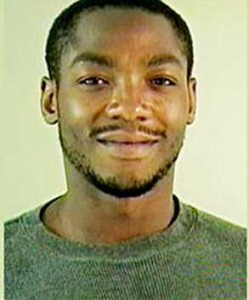
Black Action Defense Committee (BADC) told The Camera they are pleased with the Jermaine Carby coroner’s inquest’s 14 recommendations, some of which highlighted that officers’ unconscious racial bias played a role in his death.
Those recommendations were made to avoid future fatalities in similar circumstances.
In what BADC representatives said was confirmation of their position, the five-member jury also determined that Carby’s 2014 police shooting was a homicide, not suicide.
The jury recommended the Ontario Police College, which trains all recruits in the province, and Peel Regional Police use the circumstances of Carby’s death in training scenarios to illustrate issues of unconscious bias.
They also recommended the college and Peel police develop a method to objectively measure the effectiveness of training, not just on unconscious bias but also on mental health issues, de-escalation in crisis situations and use of force.
“Officers should be tested, graded and must meet a benchmark in order to pass,” the jury wrote.
The findings did not bring any criminal consequences for Peel Regional Police Const. Ryan Reid, the officer who pulled the trigger, or any other officers involved in the shooting.
However, BADC Director Kingsley P. Gilliam stressed that “based on the evidence” the attorney general of Ontario should bring appropriate charges against Const. Justin Chittenden for his role in the case.
Gilliam labeled as outrageous the behavior of the officers involved in the shooting death of Carby, a passenger in a motor vehicle during what began as a routine traffic stop.
“It brings disrepute to the administration of justice and threatens the liberty and safety of all Ontarians,” said Gilliam, adding the officers carded Carby in the car and the Brampton man was subsequently shot dead. “Does this sound like a routine traffic stop?”
He said that during lengthy and sometimes tense questioning by Faisal Mirza, the lawyer representing Carby’s family, Const. Jason Senechal admitted he had no investigative reason to ask Carby for his personal information.
Instead, Senechal was conducting a “street check” – known as carding – to create a record of the interaction and put Carby’s information into a police database.
The inquest heard that an officer who was not the one who pulled the trigger saw a knife thrown down by Carby. That officer picked up the knife and kept it from shortly after 10 p.m. until the knife was finally turned over at 5:05 a.m., about seven hours after the shooting.
BADC’s position is that an officer is only authorized to draw his or her gun in self-defense or to protect someone from harm and that if a victim of a police shooting has a weapon that is physical evidence in a crime scene which ought to be protected and preserved according to police training protocol.
Gilliam contends that holding on to the knife prevented the SIU from properly doing its job in finding out what happened that night.


